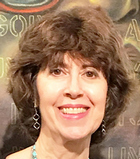America’s Veterans: The Collateral Damage of War
It is a given that before a person is equipped to be part of a military fighting machine, he or she must be trained—physically and mentally. What is not explicit is that upon a return to civilian life, there is no preparation for re-entry into the previous rhythm of life.
Hopefully, with voices demanding to be heard, the public, lawmakers, and other agencies will listen to the urgent calls to action that must be heeded.
The current situation for veterans is not new, just different. This Veterans Day, HBO is debuting a documentary entitled Wartorn: 1861-2010. Through interviews, personal letters and journals of soldiers, photos and archival footage, the 68-minute film traces post traumatic stress disorder (PTSD) back to the Civil War. At that time, survivors were labeled as hysterical, melancholic, or insane. In fact, it is noted that “after the Civil War, over half of the patients in mental institutions were veterans.” In World War I, the condition was referenced as “shell-shock.” During World War II, the term “combat fatigue” was euphemistically employed. (Included in Wartorn is a scene with a group of World War II vets sharing their stories for the first time. One man explains, “I had no one to turn to. No one understood.” Another reveals, “You’re just not coming home the same guy you left.”)
We now have the terminology and psychological insights to recognize the problem. But are we doing any better? When interviewed, General Peter Chiarelli, the Vice Chief of Staff of the U.S. Army who is working to stem the rising tide of suicides states, “You’re fighting a culture that doesn’t believe that injuries you can’t see can be as serious as injuries you can see.” In reality, Chiarellli points out, these are hidden wounds as serious as losing an arm or a leg.” He adds, “We’ve got to get them off the battlefield.”
Suicides among veterans expanded by 26 percent from 2005 to 2007. That doesn’t include the veteran deaths that were the result of high-risk behavior. More than 1,000 Vets in California under the age of 35 died after returning home from Iraq and Afghanistan between 2005-2008. Author and journalist, Aaron Glantz, succinctly outlined this problem in his article, “After Service, Veterans Deaths Surge.” He wrote that the “figure is three times higher than the number of California service members who were killed in the Iraq and Afghanistan conflicts over the same period.” He drilled down on the lack of response from the government when he appeared on the “War and Peace Report” hosted by Amy Goodman of Democracy Now.
What’s actually being done in a nuts and bolts way to support veterans? I checked in with America Works of New York, which serves veterans by offering psychological and substance abuse counseling, health insurance guidance, interview and resume preparation, and ultimately job placement. America Works is a for-profit company that is 100 percent performance based. The staff saw an upsurge of veterans into their program approximately three years ago. In 2008, they applied to the federally funded entity “Homeless Veterans Reintegration Program,” and were contracted to place 160 homeless vets in jobs within a year. They reached their goal and got a follow up three-year contract.
The founders of America Works, Dr. Lee Bowes and Peter Cove, have taken their “work first” model, which originated in 1984, and tailored it to the needs of soldiers returning from Iraq and Afghanistan—at least one in ten of whom are unemployed. In the 18-24 demographic the stats drop to one in five unemployed, as many enlistees join the service directly from high school—and are looking for a civilian job for the first time.
The facts put out by America Works explain that nationwide approximately 154,000 veterans are homeless each night. Foreclosure rates in military towns have been on the upswing of four times the national average. In 2008, over 1.3 million vets were living in poverty. Almost one million were unemployed. Over a third of incarcerated veterans have screened for PTSD. In the New York City homeless vet population, approximately 85 percent is comprised of those who served in Vietnam and Korea. Many vets move to New York, looking for services and employment they couldn’t find at home.
While I was at the offices of America Works, I had the opportunity to dialogue with Retired Navy SEAL Captain Pete Wikul, Vice President of America Works of Washington D.C. Wikul served over 39 years in the U.S. Navy and was the “Bullfrog”—a title given to the longest serving Navy SEAL on active duty. He shares the 1988 Nobel Peace Prize with all the Peacekeeping Forces who served in Lebanon from 1948-1988.
Outspoken, with lots of personality, Wikul was emphatic about the need to heal suicidal vets. “That’s what I want,” he told me. His figures related that seventeen to thirty-four vets commit suicide daily. “It is estimated by veteran suicide counselors that perhaps as many as three times as many veterans have taken their own lives than the number who died in the Vietnam War.” He said, “The first greatest sin of this country was slavery. The second is how it treats its military vets.”
For Wikul, the problem lies with the individual’s separation from the service. He penned an op-ed with Bob Kerrey outlining the need to prepare vets for rejoining civilian life. Wikul had definitive opinions on the crisis. “The nation is responsible,” he said. “I fault our political leaders.” Referencing the lip service paid to the needs of veterans he emphasized, “I want to see the line item in the budget. It’s the lawmakers that hold the purse strings.” As a man used to accomplishing his mission, his frustration was palpable. “We need analysis, and than a cure for this social ill.” Wikul recommends the America Works mantra of “work first and a rapid attachment to work” as a great leveler, and the way for an individual to maintain his/her self-esteem.
Looking at the issues from another perspective is Ryan Berg, a 28 year-old California based vet, who spent seven years in the Marine Corps. He joined up because he chose not to be in an academic situation immediately after high school. He wanted to be a leader. He currently attends UC Berkeley on the GI Bill, where he is completing a four-year degree focusing on communications. He is the Founding Editor at WhatFits.org, whose mission is to “help build lasting veterans’ communities across the United States.” In addition, they house a news and opinion blog dedicated to the movement of building “real community” among the returning veterans of Iraq and Afghanistan.
Berg has become proactive in seeking to build a “community” of veterans that is modeled on the support structure that was forged during time of service. He described how during deployment, there was a “life saving mechanism borne out of the group experience.” He believes that this core essence needs to be translated into a new language—to help vets adapt back into civilian life. “The important thing to remember,” he said, “is that there is a specific sensibility that needs to be connected between vets. We need support from those who are like us, people who have come out of the same experience. We’re learning what this new mission we are on is. We need to feel as influential in civilian society as we did in the military. We need the care of each other in order to start the new mission. The mission of coming home is a task we aren’t used to.”
For Berg, the most powerful prescription a veteran could receive is that of “community.” He qualified it as follows: “It’s when we have a group of people that hang out and speak to each other in a different way, because of our lives. Whatever stage we are at in our coming home process, life begins to matter more as we speak the same language to others who are like us.” He continued, “It’s kind of like a family. Thinking about what’s next. It’s about guys and girls talking to each other. It’s the platoon mentality. It’s everyone having each other’s back. Getting a veteran into a mental health appointment is nearly impossible without the encouragement of another vet.”
The need to connect to others who understand a shared history was repeatedly articulated in Wartorn. The common denominator pointed to was the refrain “No one except a soldier can understand what a soldier has to endure.”
In 1946, William Wyler directed The Best Years of Our Lives, which won the Academy Award for that year’s top picture. It told the story of three servicemen from the same small town trying to pick up the threads of their previous lives. Samuel Goldwyn decided to produce the film after he read an article about the difficulties experienced by men returning from World War II. The topics of familial disconnect, estrangement, and unemployment are captured in the scene below when former Army Air Force Captain Derry, who is afflicted with nightmares, wanders through an aircraft boneyard.
At the beginning of Wartorn, there is a visual quote by Homer from The Odyssey. It reads, “Must you carry the bloody horror of combat in your heart forever?”
1861, 1946, 2010.
The time to do something is now.




2 Responses
[…] CONTINUE READING […]
[…] Read the full article here […]